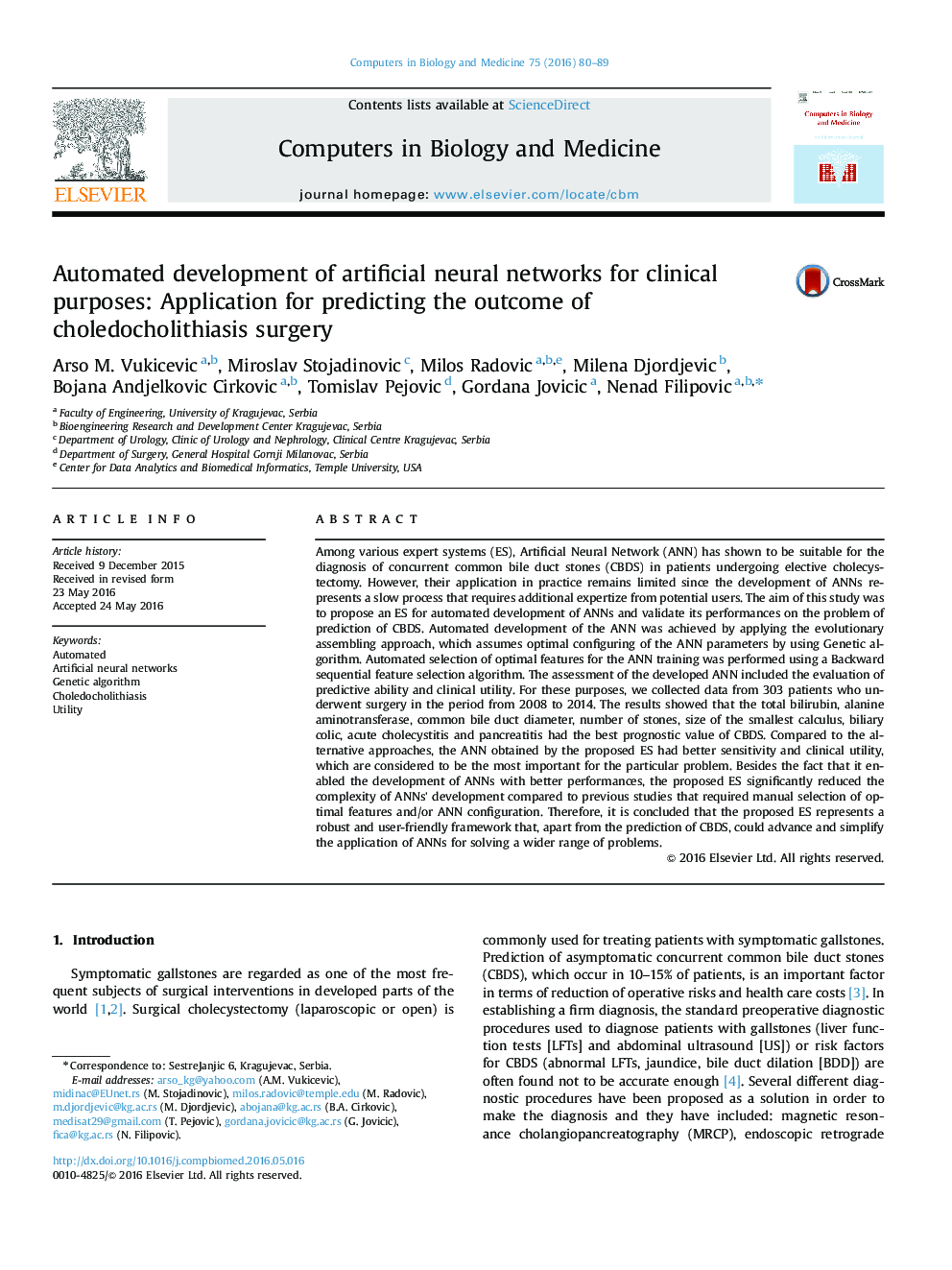| کد مقاله | کد نشریه | سال انتشار | مقاله انگلیسی | نسخه تمام متن |
|---|---|---|---|---|
| 504803 | 864435 | 2016 | 10 صفحه PDF | دانلود رایگان |
• Study proposes a novel expert system (ES) for automated development of ANNs.
• Optimal ANN was developed using Evolutionary Assembled Neural Networks.
• Optimal features for ANN training were selected automatically.
• The ES is applied for pre-treatment detection of concurrent common bile duct stones.
• The ES is assessed by measuring: model fit, predictive ability and clinical utility.
Among various expert systems (ES), Artificial Neural Network (ANN) has shown to be suitable for the diagnosis of concurrent common bile duct stones (CBDS) in patients undergoing elective cholecystectomy. However, their application in practice remains limited since the development of ANNs represents a slow process that requires additional expertize from potential users. The aim of this study was to propose an ES for automated development of ANNs and validate its performances on the problem of prediction of CBDS. Automated development of the ANN was achieved by applying the evolutionary assembling approach, which assumes optimal configuring of the ANN parameters by using Genetic algorithm. Automated selection of optimal features for the ANN training was performed using a Backward sequential feature selection algorithm. The assessment of the developed ANN included the evaluation of predictive ability and clinical utility. For these purposes, we collected data from 303 patients who underwent surgery in the period from 2008 to 2014. The results showed that the total bilirubin, alanine aminotransferase, common bile duct diameter, number of stones, size of the smallest calculus, biliary colic, acute cholecystitis and pancreatitis had the best prognostic value of CBDS. Compared to the alternative approaches, the ANN obtained by the proposed ES had better sensitivity and clinical utility, which are considered to be the most important for the particular problem. Besides the fact that it enabled the development of ANNs with better performances, the proposed ES significantly reduced the complexity of ANNs’ development compared to previous studies that required manual selection of optimal features and/or ANN configuration. Therefore, it is concluded that the proposed ES represents a robust and user-friendly framework that, apart from the prediction of CBDS, could advance and simplify the application of ANNs for solving a wider range of problems.
Figure optionsDownload high-quality image (173 K)Download as PowerPoint slide
Journal: Computers in Biology and Medicine - Volume 75, 1 August 2016, Pages 80–89
